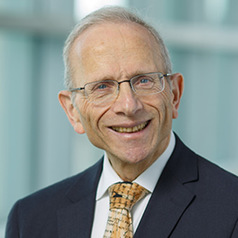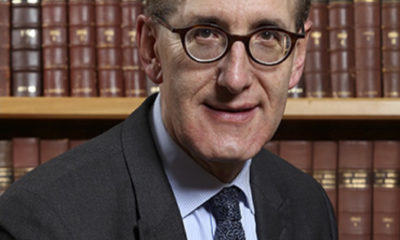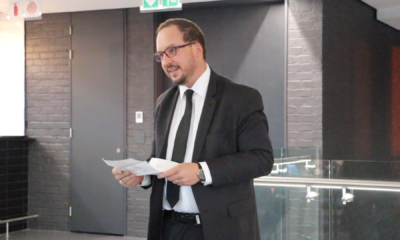
OpEds

How antisemitic conspiracies contributed to the Texas hostage drama
The man who took a rabbi and three congregants hostage in Colleyville, Texas, on 15 January believed that Jews control the United States (US). He told his hostages, as one revealed in a media interview, that Jews “control the world” and that they could use their perceived power to free Aafia Siddiqui, a Pakistani convicted in 2010 for trying to kill American soldiers and plotting to blow up the Statue of Liberty. The hostage-taker also demanded to speak to New York’s Central Synagogue rabbi, Angela Buchdahl, so that she would use her “influence” to help get Siddiqui released.
By invoking Jewish “power”, the gunman, later identified as Malik Faisal Akram, a 44-year-old British national, seemed to echo Siddiqui’s antisemitic views that Jews were responsible for the 9/11 terrorist attacks and had infiltrated American political and nongovernmental organisations. During her 2010 trial in New York, Siddiqui demanded that Jews be excluded from serving on her jury.
As a scholar of Jewish history, I know that myths concerning “Jewish power”, “control”, and “conspiracy” have circulated in America since before the Civil War, and continue today. They provide a simple, albeit imaginary, explanation for bewildering social changes that people find hard to explain and confront.
Antisemitic literature
As immigration brought Jews in larger numbers to America’s shores, particularly from Russia, one of the first overtly antisemitic books ever published in the US, Telemachus Thomas Timayenis’ 1888, The American Jew: An Exposé of His Career warned that Jews had “acquired a hold on this country such as they never secured on any nation in Europe”.
Actually, Jews comprised much less than 1% of the population at that time. Still, Timayenis, viewed as “the father of antisemitic publishing in America”, claimed that they controlled Wall Street, the clothing and tobacco trades, politics, journalism, and more.
Timayenis and his antisemitic books were largely forgotten for almost a century. Now, however, they are readily available on the internet.
Protocols and conspiracy theories
In the 20th century, the publication that did the most to disseminate the myth of a Jewish conspiracy to control the world was the forgery known as The Protocols of the Elders of Zion.
Described by the US Holocaust Memorial Museum as “the most notorious and widely distributed antisemitic publication of modern times”, the work first appeared in Russia as part of a disinformation propaganda campaign by Russian monarchists to prop up embattled Tsar Nicholas II.
Subsequently, the forgery went through numerous translations and adaptations, reaching every corner of the globe. Its explosive allegations influence people to this day.
The Protocols purports to be the minutes of late 19th-century meetings attended by world Jewish leaders, the “Elders of Zion”, keen to take over the world. They set forth different stages of the supposed behind-the-scenes Jewish plan for global conquest: everything from manipulating the economy and controlling the press to promoting liberalism and pornography. They even articulate an ultimate goal: to re-establish the line of King David and anoint “the King of the Jews”.
The Protocols form a classic conspiracy theory. The work provides a compelling, easy-to-understand explanation that connects a wide range of disparate phenomena roiling society. Nothing happens by accident, the Protocols and all conspiracy theories insist, and things seldom are what they seem. Conspiracy theorists believe that powerful controlling forces – in this case, the Jews – shape and manipulate events behind the scenes.
Believing imaginary conspiracies
Precisely because they offer a simple explanation – “the Jews are responsible” – and flatter believers into thinking they possess secret knowledge others lack, conspiracy theories like the Protocols are notoriously difficult to disprove.
After all, individual Jews, much like their non-Jewish counterparts, may well have engaged in some of the activities the Protocols and similar conspiracy theories describe. And the phenomena recounted – social, economic, political, and cultural changes transforming the world – are certainly real enough. For many conspiracy-minded folks, that’s usually validation enough.
Beyond the Protocols, a wide range of other conspiracy theories involving Jews have circulated over the past century. The great carmaker Henry Ford, influenced in part by The Protocols of the Elders of Zion, devoted extensive resources in the 1920s to proving that the “international Jew” was the “world’s foremost problem”, responsible for perceived ills that ranged, in his view, from urbanisation to the modern music and dance that he hated.
Under intense economic and legal pressure, Ford publicly apologised in 1927 “for resurrecting exploded fictions, for giving currency to … gross forgeries, and for contending that the Jews have been engaged in a conspiracy”. Yet Ford’s The International Jew remains available for purchase around the world and on the internet.
Conspiracy theorists targeted famed European Jewish bankers, the Rothschilds, as well. Niles Weekly Register, perhaps the most widely circulated magazine of its time, ascribed particular power to the Rothschild banking family which, it claimed, “govern a Christian world – not a cabinet moves without their advice”.
Almost 200 years later, echoes of the “Rothschild myth” live on in Congresswoman Marjorie Taylor Greene’s infamous 2018 post alleging that Rothschild-owned Jewish space lasers set California’s forest fires in order to clear out land for a lucrative high-speed rail line.
In recent years, George Soros, a Hungarian-born American billionaire investor and philanthropist of Jewish origin, has been blamed for a host of what the extreme far right perceives to be society’s ills. These conspiracy theories falsely attribute to Soros the anti-Trump protests, refugee problems in Europe, and the Black Lives Matter movement, among other trends.
Anti-Catholic, anti-Masonic, anti-Mormon, and anti-Muslim conspiracy theories have likewise attracted legions of followers.
In the Islamist circles from which Aafia Siddiqui and the gunman who took hostages in Colleyville sprang, however, the favourite target remains the Jews. Attacks on “Jews”, “Jewish power”, and the supposed Zionist control of America are commonplace.
The reason has almost nothing to do with real Jews and a great deal to do with a phenomenon that historian David Brion Davis noticed about 60 years ago: in environments shaken by “bewildering social change”, people find “unity and meaning by conspiring against imaginary conspiracies”.
- Jonathan D. Sarna is University Professor and Joseph H. & Belle R. Braun Professor of American Jewish History, Brandeis University. This article originally appeared on theconversation.com.










